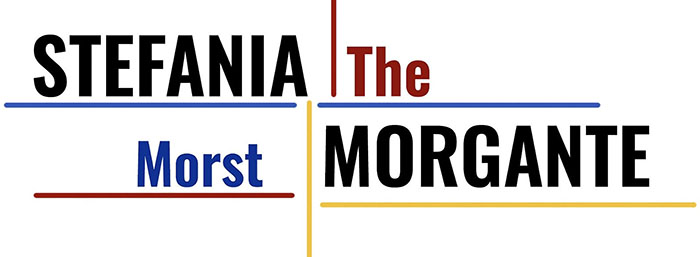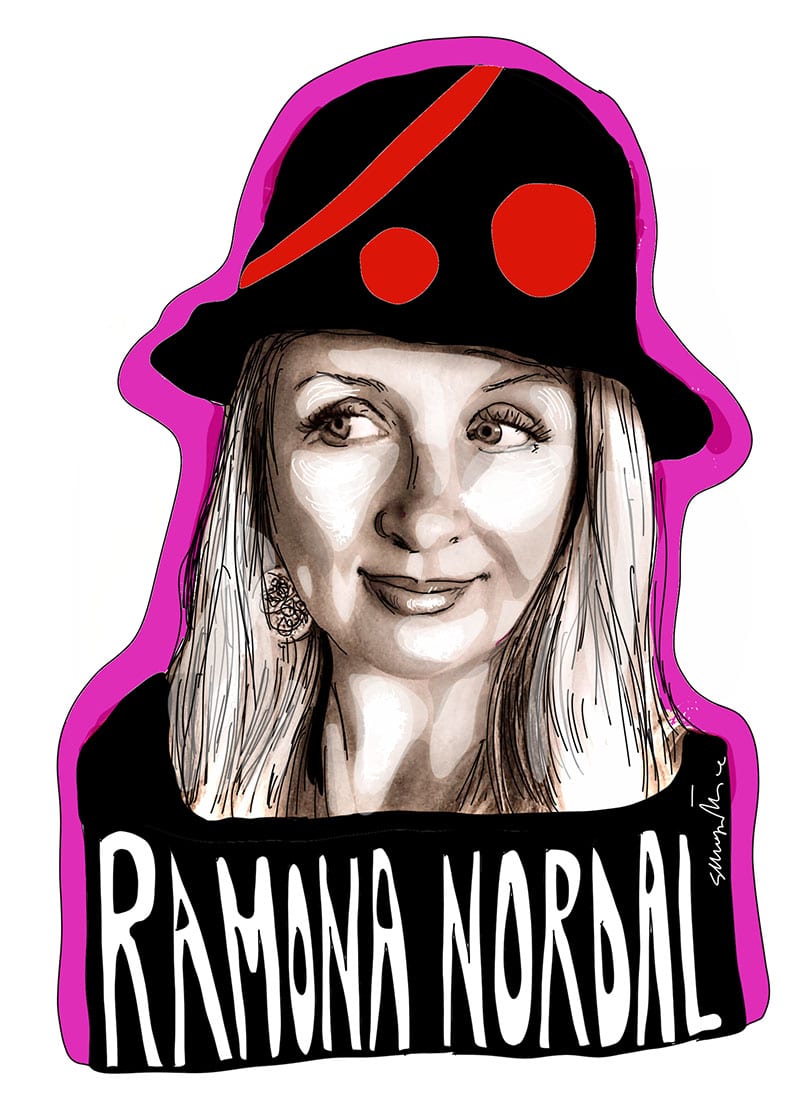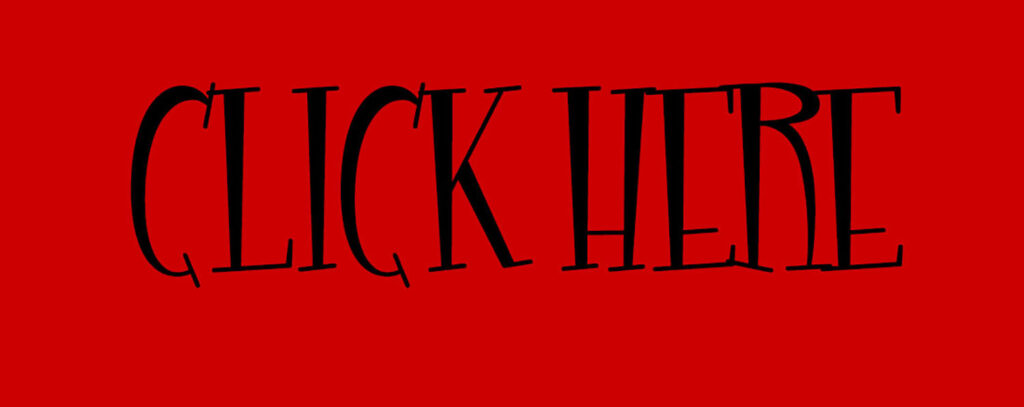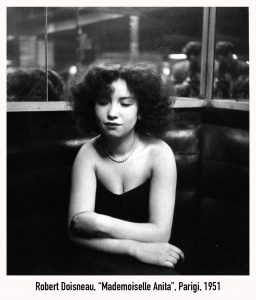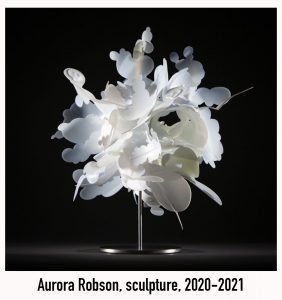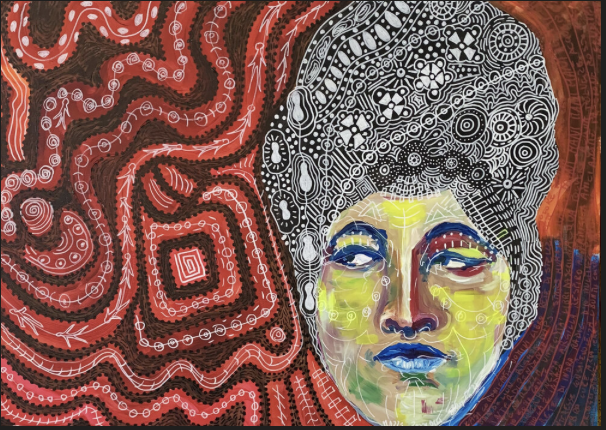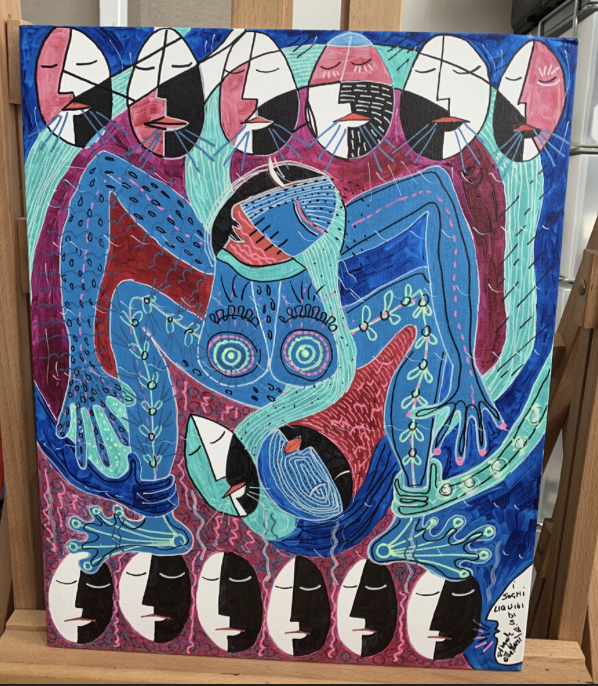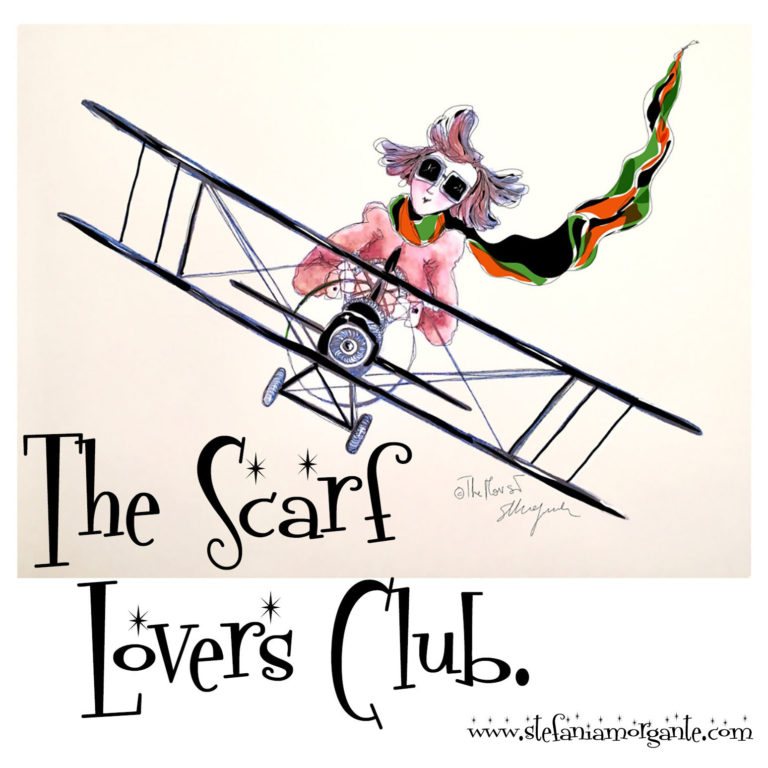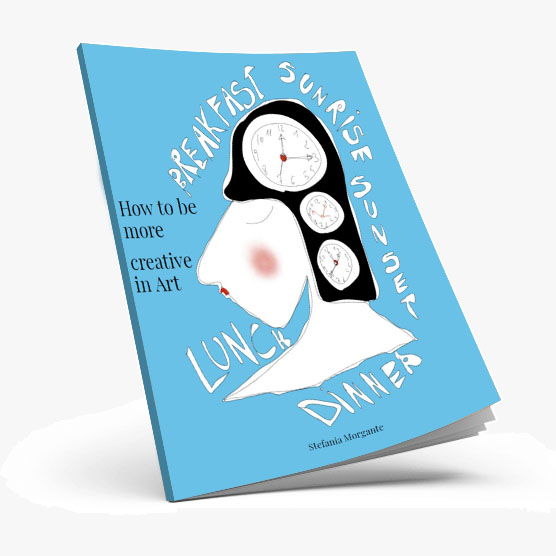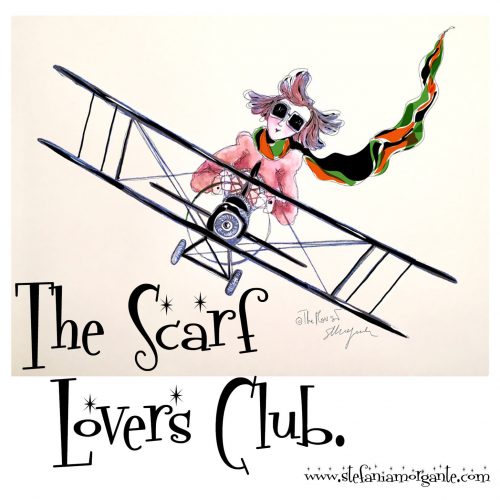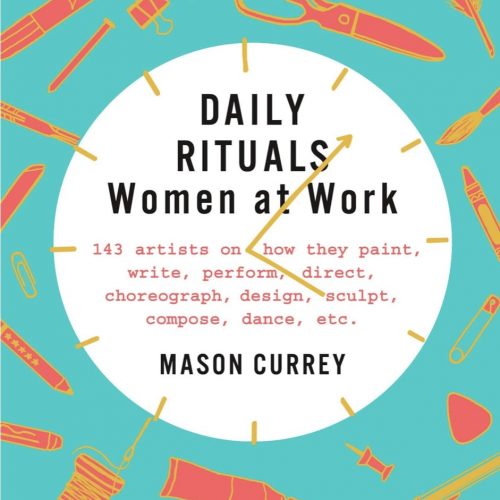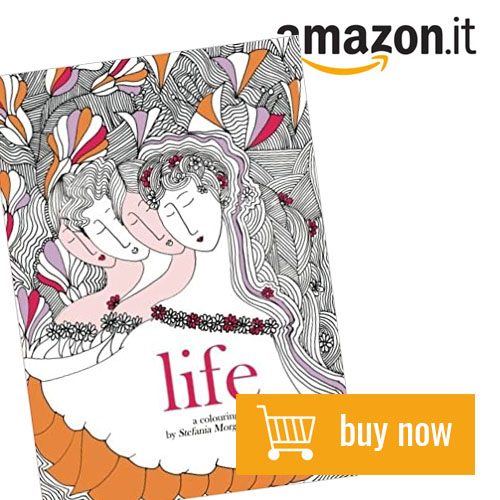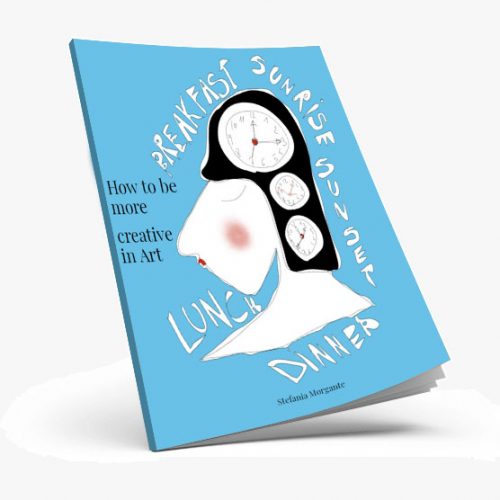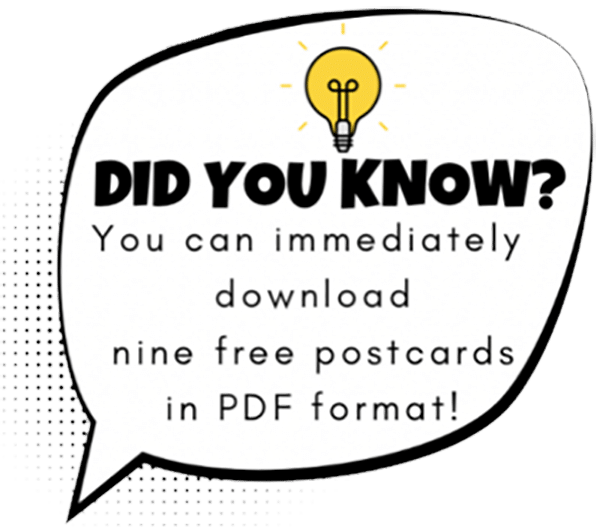Reminiscences of the past and contemporary.
Art on instagram has a privileged place.
I am constantly discovering really interesting artists and one of them is Ramona Nordal.
What really struck me is her technique so simple.
Acrylic colors and bic ballpoint pens.
They are artistic tools and tools of our everyday life. Anyone since childhood has used ballpoint pens and acrylic colors.
Yet she makes these tools magical.
Her acrylics sparkle, they expand spaces.
The faces are mysterious, lunar, made deep by a patient hand technique done with pen.
I am increasingly convinced that all it takes is a few tools and a lot of skill, technique and ideas.
Ramona Nordal makes art that is extremely personal, recognizable, yet never monotonous.
A discovery I am very happy about.
I asked her a few questions to get to know her more.
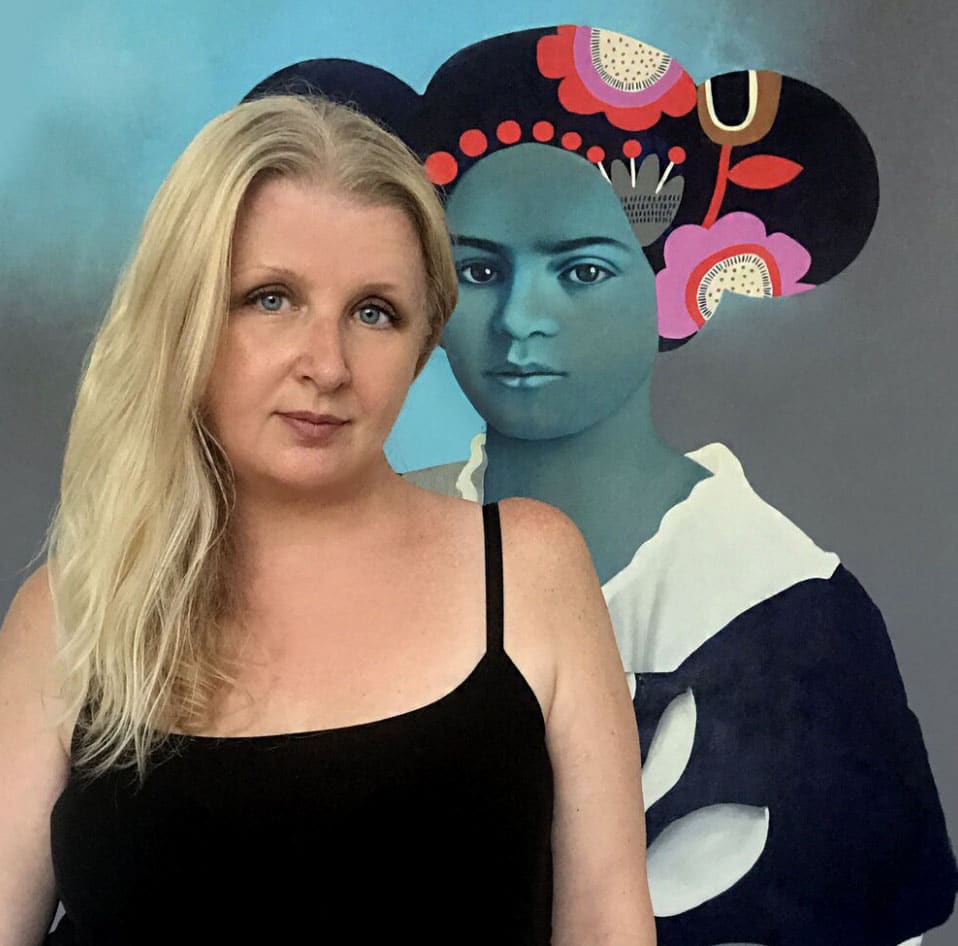
The theme of this interview is the creative act.
I have always been interested in studying other artists, in knowing how an idea is born, how it is chosen by the artist, why she uses a certain technique and how she came to choose that technique and those themes.
Let’s start dear Ramona, I’m really curious to know everything about your art!
>>What is the motivation that pushed you to become an artist?
I have been creative my whole life. I remember “art” and being creative was a daily thing for me as a child. I grew up on a farm and this allowed me to ignite my creativity at an early age.
>> When did you realize you were going to be a professional artist?
I think when you are creative as a young person your imagination soars and you unintentionally begin to see yourself as an artist. I always knew that would ultimately define who I was and what I did in life. I grew up in a small town and there was little support for me when it came to applying and preparing for a portfolio review at . My brother helped me prepare a portfolio for the admissions review. My teachers told me I shouldn’t bother applying because it very hard to get into ECAD. I enjoyed the day I went to school and let them know I got in.
>> Was the creative process taught to you in school or did it come from your own personal experiences?
My whole family is creative. It was something that we did daily. I studied art at Emily Carr University Of Art & Design in Vancouver for a year but having created my whole life… you learn the craft. I feel you learn much more on your own rather than going to school. Trial and error on your own allows you to create without outside control. This is the purist at to create.
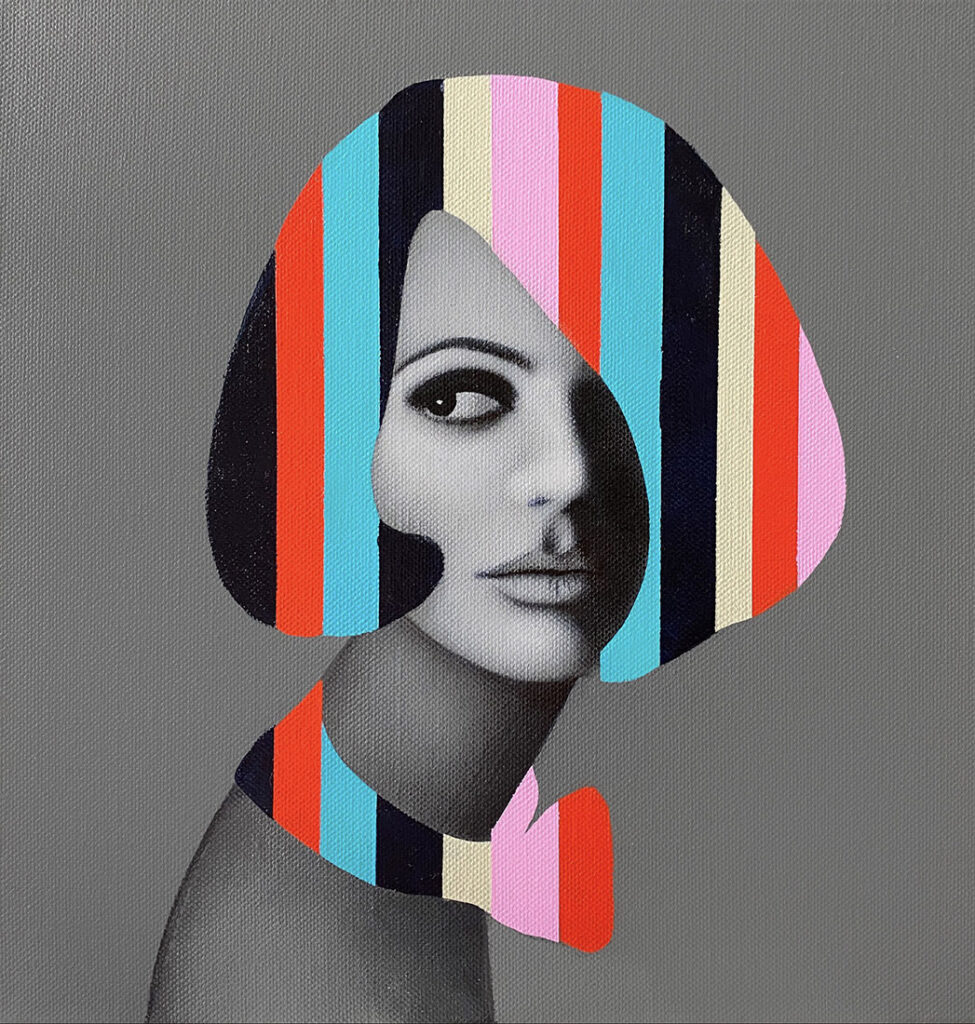
>> Is there any situation where you wouldn’t recommend getting more involved in drawing and painting? I know it’s weird to ask an artist this, but I’m interested in hearing about the moment when you lack inspiration, you no longer love what you do, and your creativity is moribund. So what do you do? Does this happen to you sometimes?
I stopped painting for 10 years. I wish I hadn’t but I did. I think sometimes it’s necessary to stop and gain the courage and wisdom to move forward professionally. If you are creating and to have temporary blocks it’s important to clear your mind.
Your creativity is always there… it just needs the space to cultivate new ideas. Everyone is different and everyone has their own way to get motivated. I think there are times when people get to a point where they no longer love being an artist. If that is the case you need to sit down and ask yourself why you create.
Being an artist means that creativity is in your blood. You have no control over it. For me, painting is something I have to do. If I don’t do it, I feel incomplete.
>> When you present a piece of work on the web, to clients, at exhibitions, what are the most common questions they ask you about how you created it?
Sometimes they would ask if it is a photo, is it air brushed, do you use models.
As artists we think we need to explain our work in great detail. I think it’s ok to explain the technique but that’s it. It’s important for the viewer to look at art without any idea of what’s it about first. Their first impression is very interesting to hear about.
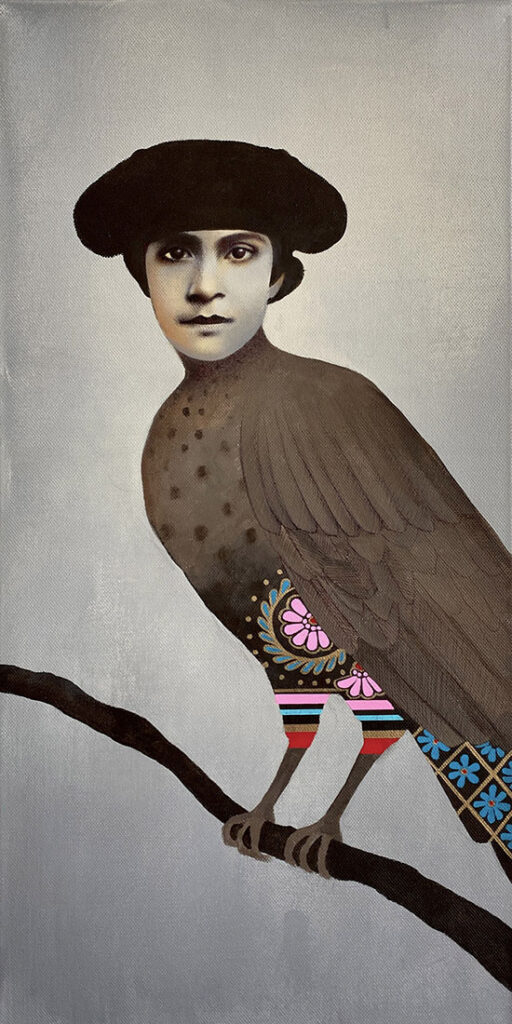
>> What is the first thing you do when you have a blank sheet of paper in front of you? Do you already know what you’re going to do? Do you already have the idea?
I always create something in my mind first. My brain compartmentalizes ideas for a painting.
>>What fuels your creativity every day?
Music and emotion.
>>What advice would you give to someone who is stuck creatively?
Create something totally out of your comfort zone.
Just do it, dont think about it….and have fun with it. This allows barriers to come down and frees your mind.
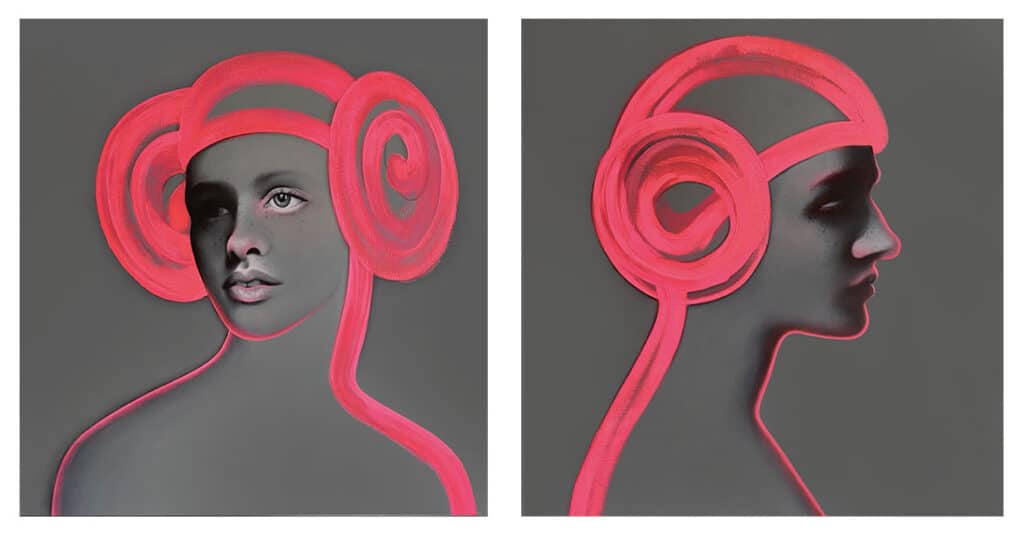
>>Is there an order to your creative process? Are you aware of this or do you change depending on the work?
I suppose there is. Music, certain songs to start, roughly figuring out the concept on the canvas, deciding on colors, deciding on the design then beginning. As you work on a painting it begins to form a narrative and this guides you along.
>> Does your creative process change if the work is commissioned? Does your creativity change if you have a collector asking for certain things?
It does a bit, it’s more direct with a specific goal in mind.
>> Tell us a secret you’ve never told anyone about your art.
When I am working on paintings the characters begin to transform into an almost tangible person. I think about what their life would be like, their personality etc. it’s a cool process that always happens with every piece.
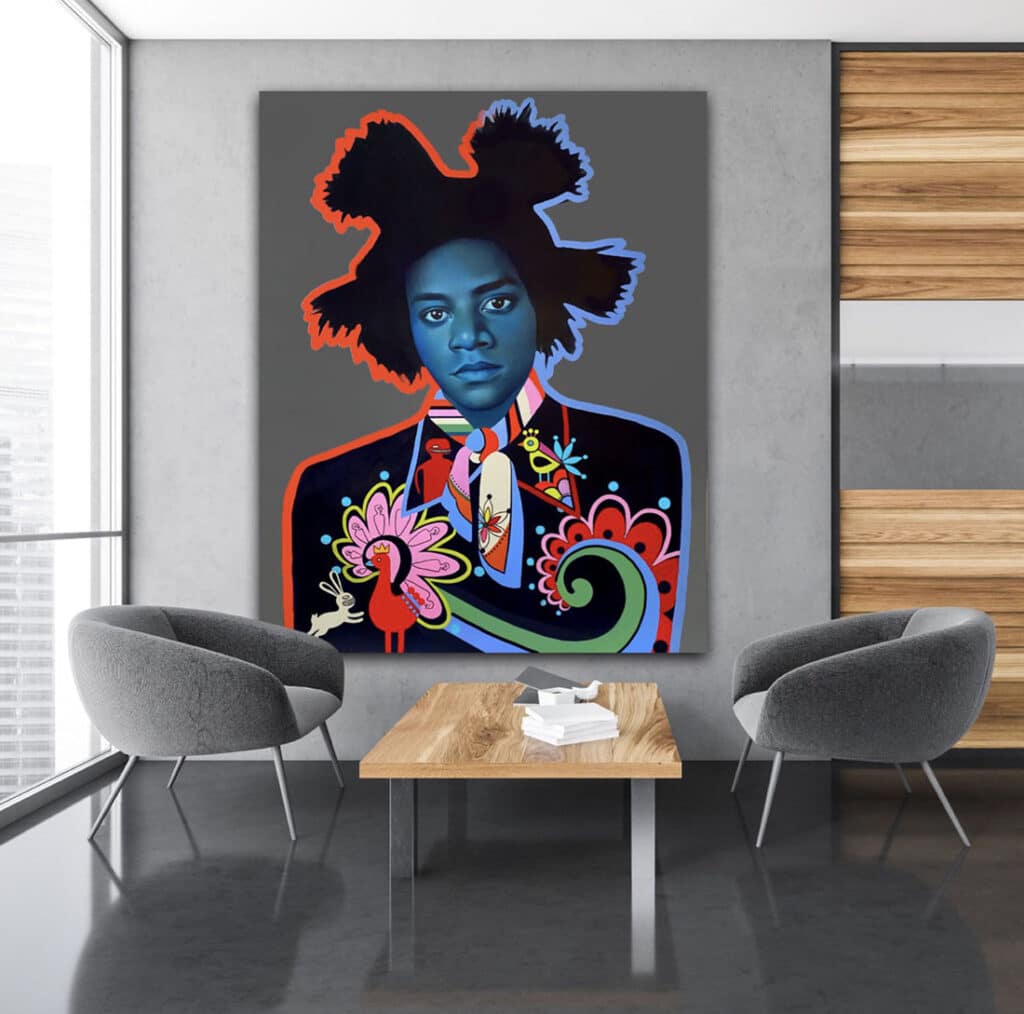
Do you want to be kept up to date on news and discounts and gifts?
Sign up by clicking on the button.
